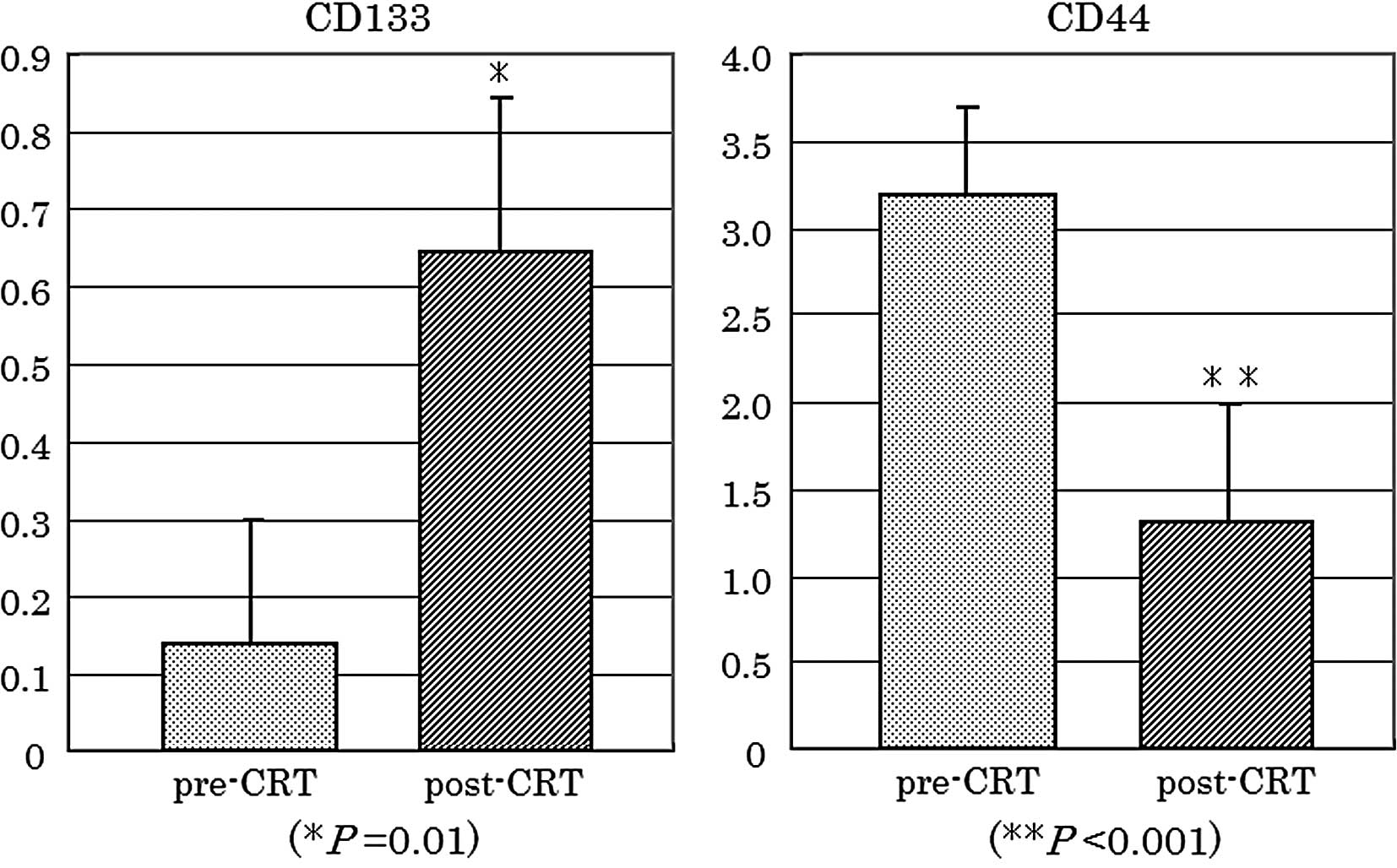Clinical significance of radiation-induced CD133 expression in residual rectal cancer cells after chemoradiotherapy
- Authors:
- Published online on: December 28, 2011 https://doi.org/10.3892/etm.2011.438
- Pages: 403-409
Metrics: Total
Views: 0 (Spandidos Publications: | PMC Statistics: )
Total PDF Downloads: 0 (Spandidos Publications: | PMC Statistics: )
Abstract
CD133 and CD44 have been considered as markers for colorectal cancer stem cells (CSCs). The association of CD133 and CD44 expression with radiation has not been fully examined in rectal cancer. Both CD133 (PROM) and CD44 mRNA levels were measured in post-chemoradiotherapy (CRT) specimens of 52 rectal cancer patients using real-time RT-PCR and compared to clinicopathological variables and clinical outcome. Their protein levels were examined in the radiation-treated HT29 human colon cancer cell line. Post-CRT CD133 in residual cancer cells was significantly higher than matched pre-CRT CD133 in biopsy specimens (n=30). By contrast, CD44 was significantly lower in post-CRT specimens (P<0.01). CD133 was associated with distant recurrence after CRT followed by surgery (P<0.05). Patients with elevated CD133 in residual cancer cells showed poor disease-free survival (P<0.05). No significant association between post-CRT CD44 and clinical outcome was found. The in vitro study showed that CD133 protein was increased in a radiation dose-dependent manner, despite of the decreased number of clonogenic radiation-surviving cells. CD44 protein was decreased after irradiation. CD133, but not CD44, was increased in radiation-resistant surviving colon cancer cells. Post-CRT CD133 in residual cancer cells may predict metachronous distant recurrence and poor survival of rectal cancer patients after CRT.













